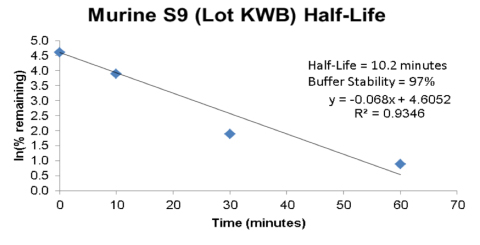In Vitro Metabolic Stability
Unless a compound is a pro-drug, good metabolic stability is important for achieving therapeutic concentrations for the sufficient amount of time in vivo. The liver is the most important site of drug metabolism in vivo, although other organs (gastrointestinal tract and lung, among others) may play a role.

The Core can assess metabolic stability in a variety of different systems, including microsomes, hepatocytes, S9 fractions, and plasma. Microsomes are typically used to assess phase I oxidation and reduction reactions mediated by Cytochrome P450 and FMO enzymes. S9 fractions can be used to evaluate phase I metabolism and some phase II (conjugation) reactions, including sulfation and glucuronidation, depending on the co-factors added. Both of these systems require the addition of a source of NADPH.
Intact hepatocytes represent the gold standard for in vitro evaluation of metabolism, as they allow for measurement of phase I and II metabolism under conditions where compound movement is restricted by membranes as it is in vivoand co-factor concentrations are similar.
Measurement of stability in plasma typically monitors for compound instability due to esterases. The Core can evaluate metabolic stability in all four systems in multiple species. Stability in fractions from other organs is also available upon demand.
The Core typically uses S9 fractions with phase I co-factors as a means of prioritizing compounds in a cost-effective manner followed by additional assays with phase II cofactors or in plasma or hepatocytes to confirm stability under additional conditions.
Typical Assay Conditions
- Compound: 2 μM final concentration
- Incubation: Time course up to 4 hours
- Analysis: LC-MS/MS
Compound requirements: 10 mM DMSO stock solution
